 Your new post is loading...

|
Scooped by
Patrick H.
|
The Russian side is ready to hand over India in the lease for 10 years a second nuclear submarine Project 971 "Pike-B"
According to the source, work to change the appearance of the nuclear-powered icebreaker will be held at the Amur shipyard. For modernization and testing of the ship, as well as training Indian crew will take three years. In this case, the ship may be delivered to the customer in 2018. According to the source, the K-322 "Kashalot" is on the Amur Shipyard (Komsomolsk-on-Amur). Submarine commanded by Captain 1st rank D.Lavrentev. Russian shipbuilders have experience in preparation for the transfer of the Indian Navy nuclear-powered Project 971 "Seal". Submarine was leased to a 10-year cost of $ 980 million. Act on its acceptance-transfer was signed in December 2011. The submarine, named "Chakra", became part of the national Navy April 4, 2012. Submarine "Nerpa" was supposed to go to the Indian Navy in 2008. However, in November 2008, during the tests in the Sea of Japan because of the unauthorized inclusion of automatic fire extinguishing systems on a submarine killed 20 people, which led to a revision of the terms of its transfer to the Indian Navy. Military investigators charged with negligence submarine commander Captain 1st Rank Dmitry Lavrentiev and hold the engineer Dmitry deathly allegedly improperly adjusted air temperature sensor to the living compartment. The trial was completed on April 26, 2013, when the jury found them not guilty again in the accident. NS "Kashalot" Project 971 (code "Pike-B") refers to the submarines of the 3rd generation. Joined the Pacific Fleet March 1, 1989. Submerged displacement - 12.77 thousand. Tons, underwater speed - 30 knots, maximum depth - 600 meters, autonomy - 100 days, the crew - 73 people. The first submarine, also named "Chakra", India was leased for three years in 1988. In 1991, the term of the contract expired, and, as pointed out by experts, under pressure from the US administration, the Soviet leadership refused to renew the lease.

|
Scooped by
Patrick H.
|
Certains médias indiens affirment que le premier des six sous-marins Scorpène construits en Inde, dans le cadre d’un transfert de technologie du groupe français DCNS, vient d’être mis à l'eau. Annonce qui s'appuie sur les déclarations d'une « source haut placée de la marine indienne » mais qui apparaît prématurée. « Le sous-marin est toujours en cours de réalisation, indique une source française proche du dossier. La mise à l’eau n’a pas encore eu lieu. Celle-ci devrait intervenir dans quelques mois. » Pour le moment, le sous-marin Scorpène se trouve donc toujours en cale sèche au chantier Mazagon Dock Limited, à Bombay, maître d’œuvre du contrat. Le programme P-75 a été lancé en octobre 2005 entre l’Inde et la France et prévoit la construction de six Scorpène par le chantier indien Mazagon Dock Limited. Le premier sous-marin devait, initialement, être livré à la marine indienne en décembre 2012 et le dernier en décembre 2017. Depuis, le calendrier a été recalé. Désormais, la livraison du premier Scorpène n’est plus prévue avant septembre 2016. Selon la presse indienne, les cinq autres suivront à la cadence d’un tous les neuf mois. Ce qui repousse la livraison du sixième sous-marin à la mi-2020. Le programme a donc tourné au casse-tête pour DCNS, soucieux à la fois de ne pas froisser son partenaire indien et de ne pas compromettre son image de fiabilité. L’important retard est attribué aux difficultés de remise à niveau du chantier indien et à sa forte propension à ne pas respecter les procédures du transfert de technologie. On notera que Mazagon Dock Limited, qui est un chantier étatique, n’a pas été sélectionné par le gouvernement Modri pour la construction en Inde de six sous-marins à propulsion anaréobie dans le cadre du programme P75i. Seuls deux chantiers privés, Larsen & Toubro et Pipavav, se trouveraient encore en lice. Ceux-ci feront nécessairement appel à des sociétés étrangères. Ce marché intéresse DCNS, qui a déjà conclu avec Pipavav un partenariat stratégique en vue de construire des navires militaires. L'Inde a fait de la construction de sous-marins une priorité de défense. Aucun sous-marin conventionnel n'a été mis en service depuis quinze ans dans la marine indienne. Celle-ci ne dispose plus aujourd'hui que de 13 sous-marins opérationnels, neuf de type Kilo russe et quatre de type 209 allemand, après le retrait du service du INS Sindhurakshak, irréparable après avoir été victime d'une explosion au mois d'août 2013.

|
Scooped by
Patrick H.
|
Dr Gurnad Sodhi, MD ThyssenKrupp Marine Systems India talks to Girja Shankar Kaura The ‘Project 75’ for the construction of six submarines for the Indian Navy has been in the pipeline for long time now. Dr Gurnad Sodhi, Managing Director, ThyssenKrupp Marine Systems (TKMS) India, which is one of the companies in fray for the order, talks about what the company has to offer to India.
Q. What has prompted TKMS to participate in one of the lndia’s largest Defence tender for the construction of six submarines under Project 75 India (P-75 (I) for the Indian Navy? A. The Ministry of Defence is expected to issue the P-75 (I) RFP for which we are planning to offer the Type 214 submarine, which combines best-in-class underwater endurance and diving depth. Besides its highly regarded anti-surface and anti-submarine operations, intelligence, surveillance and reconnaissance capabilities, the HDW Class 214's proven fuel cell-based Air Independent Propulsion system is the best available in the market and offers exceptional operational advantages to the Indian Navy. Since the Indian Navy has been our customer for over 30 years, we have established a strong working relationship with them and are in a position to fully satisfy their requirements.
Q. Has TKMS short-listed any Indian shipyard for collaboration or alliance? A. A high-level committee has been formed by the MoD and is currently evaluating the Indian shipyards. It is expected that this Committee will submit its report shortly. TKMS respects the decision by the MoD in short-listing the most capable shipyard(s) without any bias. Thereafter, we will commence our negotiations with the shortlisted shipyard(s).
Q. Will TKMS adhere to India’s new policy of ‘Make in India’? A. We are committed to the ‘Make and Made in India’ policy. This would encompass inter alia robust Transfer of Technology (ToT), training, meeting the offset obligations etc. TKMS is willing to bring its expertise in cutting-edge areas to India and co-develop solutions with local partners to meet the country's needs. Besides the most capable submarine, best value for money and a strong industrial partnership, TKMS is offering extensive ToT to India.
Q. Could TKMS throw some light on the present status of its four submarines which were commissioned in the late eighties and early nineties? A. TKMS has been a trusted partner of the Indian Navy for over 25 years. The Indian Navy has operated successfully the HDW Type 209 since their induction in 1986. The very fact that INS Shalki and Shankul were made in India by an Indian Shipyard under a technology-transfer agreement is proof that TKMS has been supporting India’s indigenous defence industry for over a quarter of a century. We can proudly claim that all our four submarines are performing well without any inherent problems.
Q. Are there any plans to upgrade the existing HDW/Shishumar class submarines with the Indian Navy? A. Yes, we are currently exploring opportunities to upgrade the Shishumar class Type 209 submarines with the Indian Navy, for lifetime extensions. TKMS has successfully demonstrated in several countries, how substantial ToT can be implemented in the upgrade of the HDW Type 209s.
Q. Is the Indian Navy also contemplating upgrading the weapon suite on the existing German submarines? A. Yes, TKMS is in discussions with the Indian Navy about this. We have the capacity to integrate any weapon system that is selected by the Indian Navy into the existing Shishumar class submarines. In fact, such customised integrations have been successfully carried out by TKMS in similar type of submarines for many other Navies of the world.
Q. What other strategic benefits does TKMS offer to India? A. We can offer to the Indian Navy the world’s best, cutting-edge technologies in the form of modular construction, stealth technologies and integration of diverse weapon systems, including Brahmos missiles, besides providing high-quality training to both shipbuilders and crew in all disciplines.

|
Scooped by
Patrick H.
|
Le gouvernement indien a retenu 2 chantiers navals — Larsen & Toubro (L&T) et Pipavav Defence & Offshore Engineering Company — pour l’attribution d’un contrat de construction de 6 sous-marins classiques dans le cadre de son projet 75i. Selon des sources haut-placées, un comité de haut-niveau présidé par le vice-amiral Subhedar, a inspecté à la fois des chantiers navals privés et publics en vue de sélectionner les chantiers pouvant postuler à l’attribution du contrat. Dans sa présentation au ministère de la défense la semaine dernière, le comité a retenu les 2 chantiers navals du secteur privé : le chantier Katupalli de L&T et Pipavav. Le contrat sera du type “achat et construction en Inde”. Cela implique que le ou les chantiers devront conclure des accords avec des sociétés étrangères. Le chantier Pipavav a déjà conclu de tels accords, avec DCNS par exemple. L’objectif du chantier est de se diversifier sur le marché des sous-marins. Il a aussi la capacité de construire plusieurs sous-marins en même temps. Le Projet 75i prévoit la construction de 6 sous-marins classiques à propulsion anaérobie. La livraison doit intervenir en 2022. Référence : Financial Express (Inde)

|
Scooped by
Patrick H.
|
India's Defense Acquisition Council (DAC) has awarded INR 30,000 crore (US$4.8 billion) contract for 12 mine countermeasure vessels (MCMV) or minesweepers to Goa Shipyard. Last November, Defense Ministry had scrapped INR 2,700 crore (US$4.3 billion) for acquiring eight minesweeper vehicles from South Korean firm, Kangnam after the firm had employed middlemen, which is a violation of the tender conditions. Earlier last year, the deal for eight MCMV from South Korean firm Kangnam Corporation were scraped as Defence Minister Manohar Parrikar discussed the idea of giving the order to Goa Shipyard.

|
Scooped by
Patrick H.
|
Visakhapatnam: The ‘Sea-Acceptance’ trials of India’s first indigenous nuclear-powered submarine INS Arihant are on track and the naval authorities are satisfied with the progress. The 6,000-tonne submarine, which is capable of carrying nuclear missiles, is expected to be commissioned and inducted into the Indian Navy’s submarine fleet by the end of this year. Earlier, it was indicated that the commissioning will be done in 2017. However, the sea trials and the commissioning of the submarine have already been delayed by several years. According to the original schedule, the nuclear submarine, which was ceremonially launched on July 26, 2009, was supposed to go for sea trials in 2010 and formally inducted into the Indian Navy by 2011. “Sea trails have commenced and they are expected to be completed by this year-end. The submarine is going through all the safety procedures. There are several government agencies, committees and atomic bodies, and the nuclear submarine needs to undergo scrutiny at various levels. Several surface and deep sea dives have already been done. Overall, the submarine is on the right track and it will be commissioned by this year-end. We are taking baby steps in making nuclear submarines and need to take utmost care so that no untoward incident happens,” Eastern Naval Command Commander-in-Chief Vice-Admiral Satish Soni told this correspondent. INS Arihant had entered the open sea waters off Vizag coast on December 15 last year, in the presence of defence minister Manohar Parikkar, who kick-started the Sea-Acceptance trials. The launch of INS Arihant’s SATs were kept a secret, due to the sensitivity involved. SATs were taken up after a series of successful Harbour-Acceptance trials at the ship building centre in Vizag over a few months.

|
Scooped by
Patrick H.
|
As the Bangladesh Navy inches towards its goal of becoming a three-dimensional force capable of operating above, on, and under water, based on its envisaged “Force Goal 2030,” the possible rise of a regional naval power in the Bay of Bengal is sure to ruffle a few feathers in New Delhi. India is seeking to be more engaged in the Indian Ocean Region (IOR) to counter an ever increasing number of Chinese naval deployments. Does Bangladesh see itself as a serious regional naval power in the years to come? Is it facing legitimate threats that warrant such a build up? What implications could this have for the security architecture in the Bay of Bengal? Having won its maritime disputes against Myanmar and India under a UN tribunal over the last two years, Bangladesh is now keen to be able to safeguard its right to explore and potentially exploit energy and mineral resources in the area. It also suffers from a very high incidence of piracy along its coast, which highlights the need to build the capacity of the Bangladeshi Navy and other costal forces to mitigate the problem. In fact, the Bangladeshi Navy has a number of vessels and aircraft on order which will give it the capability to conduct more anti-piracy and resource protection patrols. These range from old U.S. Coast Guard cutters and indigenously built patrol vessels, to Chinese built/refurbished corvettes and a budding new aviation wing comprising a handful of helicopters and fixed wing aircraft. The Navy also has two Chinese Ming-class submarines on order, due to be delivered by 2019 which will give the force some serious offensive firepower. It is this order for Chinese submarines that is beginning to challenge the overt narrative of “capacity building” for local constabulary actions to tackle piracy and guard resource assets. The only two nations that border Bangladesh on land and in the Bay of Bengal are India and Myanmar. Both countries have accepted the UN’s verdict on Bangladesh’s rights to the previously contested Exclusive Economic Zone (EEZ). The addition of offensive vessels like submarines, however, suggests that Dhaka still views India and Myanmar’s interest in the region as a threat or that it wants to harness capabilities that will help it to be taken a serious regional player. That is clearly a Bangladeshi aspiration, given that it has been dispatching aid through its navy to local natural disaster zones as well as participating in joint exercises with dominant naval forces in the region. The acquisition of two outdated diesel submarines will not pose a significant threat to India. They could be of some military value, however, if tensions with Myanmar were to re-emerge. What is ruffling feathers in New Delhi is the idea that the Chinese are beginning to make further inroads into South Asia, gaining influence through the supply of cheap military hardware and investing in infrastructure projects such as ports and airports. While Dhaka has not yet granted the Chinese any rights or privileges on its bases or territory, the recent docking of a Peoples Liberation Army (PLA) nuclear submarine at a privately built Chinese port in Sri Lanka will stoke fear of further such incidences. Over the years New Delhi has suffered from a foreign policy paralysis that has resulted in it trying to play catch up with China. It is only recently that inroads have been made in Indo-Bangladesh relations with both countries engaging each other actively to resolve territorial and power/water disputes. Dhaka is supposed to have approached India to help provide it with two submarines sometime in 2013. The Indian Navy, itself down to historically low submarine numbers, was in no position to meet the request. The Indian recommendation was to approach Russia, but China was willing and able to step in and meet the demand. Bangladesh has been seeking to diversify its defense equipment suppliers over the years. These efforts have been stymied by factors of affordability, given its weak economy. While woefully behind in its ability to supply Bangladesh with military hardware, India can leverage historical, cultural ties, and military-to-military engagements in the form of joint exercises and training of personnel. When the Bangladesh Navy eventually does acquire the capability to operate in the air, surface and under water it will be of paramount importance for India to engage and develop ties to not only better gauge Bangladesh’s intent but also to create a regional ally instead of a competitor. Any other outcome has the potential to produce a naval competition in the Bay of Bengal that Bangladesh can ill afford and India certainly does not need.

|
Scooped by
Patrick H.
|
With a title almost as long as its 10 paragraphs of text, the “Joint Strategic Vision for Asia-Pacific and Indian Ocean Region” may be remembered as the most radical end-product of the Indo-US Republic Day summit. The vision document will be seen by many as India and the US coming out of the closet about their strategic concerns regarding a more assertive China. And a behind-the-doors US agreement with India to provide technological assistance to the indigenous aircraft carrier may be putting flesh on the bones of this strategic coalition. Beijing is never mentioned explicitly in the document. However, the line, “We affirm the importance of safeguarding maritime security and ensuring freedom of navigation and over flight throughout the region, especially in the South China Sea” is a direct attack on China’s expansive maritime claims. So is the demand that such claims be handled under the United Nations Law of the Sea — Beijing’s claims are seen as in blatant violation of the Convention. The fourth paragraph of the formal joint statement openly merges India’s “Act East” policy with the US’s “Rebalance to Asia”. China, which has interpreted the latter as a containment of its own influence, can now be expected to see “Act East” with a similar jaundiced eye. In contrast, India rejected Xi Jinping’s Maritime Silk Route proposal. The vision document also calls for the US and India to work to build connectivity, both transport and energy, linking “South, Southeast and Central Asia.” This mirrors similar plans worked out between India and Japan to construct infrastructure between India, Bangladesh and Myanmar. The strategic concept behind all this: build east-west connectivity to counter the enormous north-south running infrastructure that China is building. Beijing is seeking to make itself the transport hub of Asia. India is effectively working to develop an alternative network. A key element of the rebalance policy of the US is the creation of the Trans-Pacific Partnership, a free trade agreement that would keep out China. New Delhi has been wary of the TPP. But the vision statement notably signals an Indian interest in joining the Asia Pacific Economic Cooperation forum – a prerequisite for TPP membership. The US decision to provide assistance to India’s carrier project is an important step in giving the Indian Navy the heft to have the maritime capability to hold its own in the Indian Ocean. The September Modi-Obama summit saw the two agree on the US helping India with its next generation of naval vessels: this may be the first manifestation of this. The question for the Modi government will be how it manages the Chinese reaction to India’s strategic coziness to the US, Japan and Australia.

|
Scooped by
Patrick H.
|
The Navy on Thursday commissioned three Immediate Support Vessels (ISVs), capable of patrolling the coastal stations at high speeds. The vessels were part of a project representing the ‘Make in India’ concept promoted by the Centre, the Navy said. The ISVs, commissioned in Mumbai by Vice-Admiral Anil Chopra, Flag Officer Commanding-in-Chief, Western Naval Command, have been funded by the ONGC. They will be operated by the naval crew, a defence spokesperson said. They are primarily meant for the security of the offshore development areas (ODA). “The induction and deployment of these ships will augment the ongoing efforts to bolster coastal security, especially with respect to offshore oil installations,” the spokesperson said. The ISVs are fitted with Heavy Machine Guns and state-of-the art radar and navigation equipment.

|
Scooped by
Patrick H.
|
India and the US are likely to expedite discussion on joint production of electromagnetic system to smoothen takeoff and landing of fighter jets on board. India is keen to jointly develop Electromagnetic Aircraft Launch System (EMALS) with the US for the aircraft carrier that is under production in Kochi, officials were quoted as saying by The Economic Times. Frank Kendall, the US undersecretary of defence for acquisition, technology and logistics, who arrives ahead of Obama, will discuss with his Indian counterparts the possibility of joint production of defence items including EMALS, officials said. There is a possibility that EMALS might be one of the items where chances of joint production are high, officials added. India currently operates two aircraft carriers, one stationed along its eastern coast and the other along the western coast. EMALS is a system under development by the US Navy using a linear motor drive instead of the conventional steam piston drive. Kendall, who is visiting India after the Russian defence minister came calling, is expected to give momentum to the Defence Trade and Technology Initiative (DTTI), which promotes collaboration in defence technology and enables co-production and co-development of critical defence system. Besides EMALS, Kendall's discussions will focus on joint production of unmanned aerial vehicles and systems for the C-130 military transport aircraft built by Lockheed Martin Corp. Some projects could be announced after the summit meeting of Prime Minister Narendra Modi and President Obama, officials indicated. India has received five C-130Js built by Lockheed Martin and also has placed orders for six planes, parts of which will be delivered by 2017 and the jet planes will be delivered by 2017.

|
Scooped by
Patrick H.
|
VISAKHAPATNAM: City-based Hindustan Shipyard Limited (HSL) has inked a memorandum of understanding with South Korea's Hyundai Heavy Industries Co Limited, the world's largest shipbuilding company, in a bid to boost its submarine manufacturing capabilities at one of India's oldest ship building yards.
At the same time, HSL sources said the shipyard is also looking at tying up with South Korea lithium polymer battery manufacturer - Kokam - to enhance its competencies in submarine building.
The development comes close on the heels of HSL forming a consortium with BHEL (Bharat Heavy Electricals Limited) and Mishra Dhatu Nigam Limited (MIDHANI) to bag the order for construction of six submarines, which are estimated to cost a whopping Rs 60,000 crore, under Project 75 (I) of the ministry of defence.
According to a senior HSL official, "Hyundai Heavy Industries will help us in the building of submarines as they are the biggest shipyard in the world and have scientific equipment and methodology."
Referring to Hyundai's participation, the HSL official said, "India offers a huge potential for the South Korean company. India has a 40-year submarine construction programme and Hyundai doesn't have a stronghold in our sub-continent as of now. It's a win-win situation for both HSL and Hyundai."

|
Scooped by
Patrick H.
|
Analysis of the Indian Navy's new Project 17 Shivalik-class frigates has revealed that the vessels are fitted with a new-generation very high frequency / ultra high frequency (VHF/UHF) communications intelligence/direction finding (COMINT/DF) system supplied by Israel Aerospace Industries' Elta subsidiary. Built by Mazagon Dock Ltd in Mumbai, INS Shivalik , INS Satpura , and INS Sahyadri were commissioned into the Indian Navy between April 2010 and July 2012. The ships mix weapon and sensor systems acquired from European, Israeli, Russian, and indigenous sources. A distinctive feature of the Project 17 design is a pole mast, mounted on a platform extending just forward of the EL/M-2038 surveillance radar aft, with a distinctive COMINT/DF antenna.

|
Scooped by
Patrick H.
|
Mumbai: State-owned power equipment maker Bharat Heavy Electricals Ltd (BHEL) has entered into a partnership with Mishra Dhatu Nigam Limited (Midhani) and Hindustan Shipyards Limited (HSL) to bid for the P-75 I submarine project of the Indian Navy. "The consortium will jointly stake claim with the ministry of defence for being considered as a prospective bidder for the proposed P-75 I project of the Indian Navy for building six submarines at an Indian shipyard," BHEL said in a statement. Project-75 India (P-75 I) aims at building six submarines for the Indian Navy to plug gaps in the submarine fleet. The estimated cost of the project is $11.10 billion. The MoU for the upcoming venture was signed between BHEL, Midhani and HSL Dec 26. "BHEL has a large infrastructure, including dedicated engineering, research and development and manufacturing facilities at several locations to manufacture various types of equipment and provide complete services to meet the requirements of the Indian defence sector," the Maharatna company said.
|

|
Scooped by
Patrick H.
|
VISAKHAPATNAM:The second batch of three Immediate Support Vessels (ISVs), comprising T-38, T-39 and T-40, were commissioned by Flag Officer Commanding-in-Chief, Eastern Naval Command, Vice Admiral Satish Soni at an impressive ceremony at the Naval Dockyard Tuesday. The three ISVs are in addition to the first batch of ISVs commissioned last year and will constitute the 84th Immediate Support Vessel Squadron based at Visakhapatnam. The ISVs are armed with heavy machine guns (HMGs) and are equipped with state-of-the-art radar and navigation equipment. They are fitted with two caterpillar engines of 1,600 MHP each to provide water jet propulsion which provides the vessels a high speed of 40 knots and an endurance of 500 nautical miles. These ships are capable of carrying out day and night surveillance and can be used for rapid insertions/extraction of MARCOS for military intervention. The induction and deployment of these ships will augment the ongoing efforts to bolster coastal security and provide protection to our offshore assets from asymmetric threats. Two ISVs have been built by Rodman Spain whereas one ISV was built by Abu Dhabi Ship Builders (ADSB). The project was a joint collaboration between Oil and Natural Gas Corporation (ONGC) Limited, Ship Builders and the Indian Navy. Commanding Officers of T-38, T-39 and T-40 Lieutenants Jai Kishore, Shobhit Saxena and Vaibhav Bhardwaj respectively read out the commissioning warrants. Hoisting the Naval Ensign onboard for the first time and Breaking of the Commissioning Pennant with the National Anthem in the background marked the completion of the commissioning ceremony. On the occasion, Vice Admiral Satish Soni said that the ISVs were brought to Naval Dockyard, Mumbai, where delivery acceptance trials were carried out. The ships have sailed 1,200 nautical miles from Mumbai to Visakhapatnam in over 12 days before getting commissioned and have proved their sturdiness as they successfully crossed the Gulf of Mannar facing strong winds and high seas.

|
Scooped by
Patrick H.
|
This is the first good news for India's fast depleting submarine fleet in a long time. The first of the six Scorpene attack submarines being built at Mumbai's Mazagon Docks Ltd (MDL), under transfer of technology from France's DCNS, is now floating in the water. This is an indication that the delivery of the submarines, delayed by over four years, is finally on track. The revised deadline for the delivery of the first Scorpene to the Indian Navy is September 2016. Thereafter, the delivery of the subsequent five has been promised at the rate of one every nine months. A submarine is assembled in dry dock. Floating it in water is an indication that it's in an advanced stage of completion. In technical terminology, this marks the "launch" of the submarine. "Both the pressure and the outer hull of the first Scorpene are in place. Much of the internal fit is also progressing well. The submarine will now be placed on a pontoon, and tugged out of MDL docks to the nearby Indian Navy Dock. This will free one precious submarine-building dock at MDL, and thus help in meeting deadlines for subsequent Scorpenes. The remaining work on the first submarine, in particular the fitment of batteries, will be done in the Naval Dock," a highly-placed source in the Indian Navy disclosed to The Sunday Guardian. After the fitment is complete in the Naval Dock, the first Scorpene will be put through harbour trials. Once it clears the harbour trials, the boat will head for sea trials, during which its weapons firing capability will also be validated, before finally being inducted as a warship. The Scorpene is one of the world's most advanced and stealthy diesel-electrical submarines. It will be armed with Exocet missiles and Black Shark torpedoes. This marks a desperately-needed relief for the Indian Navy, which has lost five submarines in the last 15 years due to decommissioning or phase-out and accident, but not added a single new conventional submarine. The Sunday Guardian had reported last week the retirement of INS Sindhurakshak, a Kilo class submarine, which suffered a catastrophic on-board explosion, rendering another blow to India's underwater strength. The number of conventional submarines is down to 13, of which three are in life extension refit. Another six are due for similar life extensions. Due to the critically-low force levels, these will be spared only after the Scorpenes start coming in. A recent CAG performance audit has brought out the desperation. It disclosed that the operational availability of submarines is as low as 50% of those not in elaborate repair or refit. The only addition to India's underwater fleet in nearly 15 years was a nuclear-powered Akula class attack submarine, codenamed INS Chakra, in 2012. This has been taken on a 10-year lease from Russia. To maintain minimum numbers of conventional submarines, India embarked on a 30-year programme in 1999 to build 24 submarines. The programme is alarmingly behind schedule. The contract for the Scorpenes, which were to be the first element, was signed in 2005. The first submarine was scheduled to be delivered in 2012, but is now over four years behind schedule. Timeline slippages also led to heavy cost escalation from the initially contracted Rs 18,798 crore to Rs 23,562 crore. Because of the huge delay in the Scorpenes and then in deciding on a second line of submarines, the Indian Navy has already obtained government approval for converting the requirement for six of the 24 conventional submarines into nuclear-powered ones (SSNs) akin to the leased INS Chakra. This is also significant from the point of view of increasing forays by Chinese nuclear submarines in waters close to India.

|
Scooped by
Patrick H.
|
NEW DELHI — The takeover of Pipavav Defence and Offshore Engineering by Reliance Infrastructure represented the first such acquisition in India's defense arena, but analysts wonder if the new ownership will fare any better dealing with the Defence Ministry's bureaucracy. Anil Ambani, owner of Reliance, announced on March 4 the company had purchased an 18 percent equity stake in Pipavav for US $136.5 million and also assumed management control. The takeover of Pipavav Defence, which has the only Indian dry dock capable of building aircraft carriers, represents both despair and hope in the defense sector, said Nitin Mehta, a New Delhi-based defense analyst. "With management control of Pipavav Defence, Reliance Infrastructure gets a quick entry into the defense market, where getting licenses and setting up infrastructure is difficult," Mehta said. "However, Pipavav, after getting the first license to make warships, is submerged in debt and the management is fatigued with the slow pace of growth of private companies in the defense sector. "The acquisition of Pipavav makes an entry into the defense space by a leading industrial group, but the pain of getting business from the Indian Ministry of Defence because of the lengthy bureaucratic procurement process can fatigue anybody. Only time will tell if the new owners are able to tap the big ticket defense sector," he added. Shares of Pipavav fell 10 percent March 5 after the announcement, and an executive of stockbroker Indiabulls Securities said the market was expecting a better price for the shares. Even shares of Reliance Infrastructure fell as the debt load of Pipavav will weigh on the company. Pipavav Defence, owned by Nikhil Gandhi, has sought strategic partners for more than two years, according to media reports, because the company was saddled with a debt of about $1 billion. A Pipavav source said the company has been trying to exit the defense business. The acquisition comes at a time when the Ministry of Defence is preparing a tender only for domestic shipyards to acquire six conventional submarines for $12 billion. In October, the Narendra Modi government reversed a 2010 decision that had proposed a global tender and instead decided to give the tender only to domestic shipyards, which then could form ties with overseas defense companies. A Pipavav executive said, "We have technical tie-ups with overseas companies including Saab of Sweden, DCNS of France and Rosoboronexport of Russia for building submarines, aircraft carriers, destroyers, frigates, LPDs and offshore patrol vessels, besides manufacturing radars and electronic warfare systems for the naval ships." The company is also planning to refurbish 155mm artillery guns and other armored vehicles, missile systems, and other platforms, he said. "For the Air Force segment, we plan to make aerostructures, air frames and avionics besides air defense systems for the Navy, Army and Air Force," the executive added. In 2012, Pipavav and DCNS announced a technical partnership to build warships. However, their relationship has not produced any business orders and it is not known whether the new owners of Pipavav would strike a fresh tie up agreement with DCNS. Overseas shipyards DCNS, Rosoboronexport, HDW of Germany and Navantia of Spain are expected to forge ties with domestic shipyards to bid for the submarine tender, likely to be released in three months. One section of the Indian Navy favors the Russian-made air independent propulsion submarines, finding them more safe and robust, an Indian Navy official said. Another group, mostly younger, prefers the French submarines based on superior electronics and sensors.

|
Scooped by
Patrick H.
|
Seeking to enhance its surveillance capabilities on its warships, the Indian Navy (IN) has now announced a global competition for procuring ‘Ship-Borne Unmanned Aerial Vehicles’ (UAV) that can augment various patrolling and search-related tactics on its vessels. The IN currently operates two squadrons of UAVs, but they are land-based platforms operating from naval air stations in Gujarat and Kerala. The Request for Information (RFI), issued by the Directorate of Naval Air Staff (DNAS) last month seeks 50 Naval Shipborne Unmanned Aerial System (NSUAS) for Intelligence, Surveillance and Reconnaissance (ISR) and monitoring of Sea Lines of Communication (SLOC), Exclusive Economic Zone safety, anti-piracy and anti-terrorism functions along with Search and Rescue (S&R) roles, naval officials said. At present, the IN operates two squadrons of Israeli-origin Heron and Searcher Mk.II UAVs at the Indian Naval Air Station (INAS) 342 at Kochi and INAS 343 at Porbandar in Gujarat. “However, the smaller UAVs launched from ships increases the vessels’ surveillance range. They also enhance the ship’s communication with other friendly vessels by relaying signals, especially from the Rukmani, the dedicated naval communications satellite. It is part of a larger intertwining communications network in a naval manoeuvre coordinating with other aircraft, ships and satellites. An important function is also to track the trajectories of friendly missiles towards their targets,” explained an IN source. One such NSUAS was also tested here when the Austrian make Schiebel S-100 Camcopter being launched from an Indian Coast Guard ship a few years ago. While the RFI does not specify the type of ‘recovery’ provision — whether ‘assisted’ or ‘auto’ for the UAV — it does stipulate that the craft should also be capable of operating from ashore, although it is primarily intended to be controlled from ships. According to defence industry sources, Boeing firm Insitu is one of the interested companies, looking forward to pitch their ScanEagle NSUAS. Various technical queries in the RFI the interested bidders are expected to answer also includes questions on whether the system’s control can be handed over from one ship to the other and whether the control station can be miniaturised into a ‘stand alone laptop control’, indicating the IN’s needs for a versatile platform.

|
Scooped by
Patrick H.
|
The union cabinet has cleared a plan for the indigenous construction of seven stealth frigates and six nuclear-powered submarines to bolster the Indian Navy. Defence ministry officials said today that the decision was taken recently by the cabinet committee on security. The decision to build the six new submarines is part of the 30-year submarine building programme cleared in 1999. The plan is to have 24 submarines in 30 years. The first project was the P75, under which six Scorpene submarines are being built in India. Another project for six more submarines was cleared by the government last year and this project was titled P75I. The Request for Proposal for the project is likely to be issued in March. "The government has tweaked the project under which the CCS has taken a decision that the next six submarines would be nuclear-powered, unlike the conventional ones that were envisaged," sources told PTI. There was no indication of who would build these 'indigenous' craft, or where the technology will come from – India clearly does not have the technology to build such advanced craft; and the 'indigenous' tag merely means 'assembled in India'. They said it was different from the P75I project and was already envisaged when the 30-year project was cleared. The government has also decided to go ahead with the 'Project-17A' for stealth frigates under which four will be constructed at Mazagon Docks in Mumbai and three at Garden Reach Shipbuilders and Engineers in Kolkata. The sources said this was a "follow on" order and money has been allocated for it.

|
Scooped by
Patrick H.
|
BRAHMOS Supersonic Cruise Missile was successfully test fired from the Indian Navy's newest destroyer INS Kolkata. The launch was flawless and the missile met all its designed parameters. The Indian Navy commissioned INS Kolkata on 16th August 2014. This is the first ship of this class, with two more ships in the pipeline. All the three ships are equipped with vertical launched BRAHMOS Supersonic Cruise Missile System as the prime strike weapon.
Kolkata class destroyers are fitted with IAI's EL/M-2248 MF-STAR radar , VLS to launch 16x Brahmos anti-ship supersonic cruise missile and Barak 8 surface-to-air missiles, 4x AK-630 close in weapon systems. The Universal Vertical Launcher (UVLM) being used in these has a unique design, developed and patented by BrahMos Aerospace. The UVLM has the benefits of stealth and permits launching of the missile vertically in any direction.
BrahMos chief Shri Sudhir Mishra congratulated the BrahMos Team and Indian Navy on the successful mission.

|
Scooped by
Patrick H.
|
NEW DELHI: Russia, France, Germany and Spain, all better watch out. They may have to contend with Japan in the race to supply submarines to India. In keeping with their expanding strategic partnership, the Modi government has asked the Shinzo Abe administration whether it would be interested in the over Rs 50,000 crore project to build six stealth submarines in India.
With Japan recently ending its decades old self-imposed arms export embargo, New Delhi has forwarded "a proposal" to Tokyo to "consider the possibility" of making its latest diesel-electric Soryu-class submarines in India, say sources.
This "feeler" dovetails into PM Narendra Modi's strategic outreach to Japan, as well as Australia and the US, since he took over last year. The possible sale of Japanese US-2i ShinMayva amphibious aircraft to the Indian Navy is already being discussed. Australia, too, is considering the Soryu submarines to replace its ageing Collins-class vessels. The US, on its part, has been pushing for greater defence cooperation among India, Japan and Australia to counter China's assertiveness in the Asia-Pacific region. The recent Obama-Modi summit led to the "joint strategic vision for Asia-Pacific and Indian Ocean Region" with a direct reference to South China Sea, where China is locked in territorial disputes with its neighbours. Both Japan and Australia are also keen to participate in the annual Indo-US Malabar naval exercise on a regular basis, which has riled China in the past. But the 4,200-tonne Soryu submarines, manufactured by Mitsubishi Heavy Industries and Kawasaki Heavy Industries, may not meet Indian requirements. Japan will also be just one of the contenders for the mega programme, called Project-75-India, if it agrees to throw its hat into the ring.
Countries like France (ship-builder DCNS), Germany (HDW), Russia (Rosoboronexport) and Spain (Navantia) are already girding up, with the first three having the experience of building submarines for India. The six new submarines, with both land-attack missile capabilities and air-independent propulsion for greater underwater endurance, are to be built at an Indian shipyard with foreign collaboration. "If Japan is really interested, it will have to form a joint venture with an Indian public/private shipyard," said the source. The Modi government wants to kick-start Project-75-I, which has not taken off due to politico-bureaucratic apathy since being accorded "acceptance of necessity" in November 2007, in the backdrop of India's rapidly depleting conventional submarine fleet.
A high-level committee, led by Vice Admiral AV Subhedar, is slated to submit a report to the defence ministry next month on the domestic shipyards which are capable of submarine-manufacturing. "The tender or RFP (request for proposal) to the shipyards should be issued this year," he said.
The Soryu submarines, incidentally, were inducted into the Japanese maritime self-defence force from 2009 onwards. Already equipped with AIP, Japan is now working to install lithium-ion battery propulsion systems in its next-generation of the Soryu submarines.

|
Scooped by
Patrick H.
|
The United States is regularly updating India on Chinese submarine deployments in the Indian Ocean. Last month, a US drone picked up a Chinese nuclear-powered attack submarine on the surface off Yemen. The information was relayed to the security establishment in New Delhi's South Block. China's deployment of submarines-three in the past year-in the Indian Ocean have worried Indian planners. This intelligence cooperation with the US assumes significance in the light of the first-ever US-India joint strategic vision for the Asia-Pacific and Indian Ocean region unveiled in New Delhi by President Barack Obama and Prime Minister Modi, on January 25. China was not mentioned, but the vision document alluded to it by affirming 'the importance of safeguarding maritime security and ensuring freedom of navigation and over flight throughout the region, especially in the South China Sea.' Indian intelligence officials say they are keen on intelligence relating to terrorism emanating from Pakistan on its western borders and Chinese military activities. Defence officials in New Delhi said that the Type 091 Han-class was 'running on the surface' accompanied by an escort which appeared to be a replenishment ship. The elderly 1970s vintage Han class attack submarine, is believed to be part of the 19th anti piracy task force that has been in the Gulf of Aden since December 10. This is the third such deployment of a submarine by the PLAN since 2013. Earlier, the docking of a Song-class submarine in Colombo in September and November last year created ripples in New Delhi. The PLAN terms these submarine deployments as routine and part of its anti-piracy patrols, an assertion that naval planners take with a pinch of salt. Jayadeva Ranade, former joint secretary R&AW expects intelligence on China, particularly naval intelligence, as one area where both India and the US could gainfully cooperate. "The information supplied regarding the Chinese submarine in Colombo and later in the Indian Ocean are examples. I'm sure there is more that has been shared by the US about the route taken by the submarine, capabilities displayed, but I am not too sure whether the exchange of intelligence regarding our land borders with China has increased," he says.

|
Scooped by
Patrick H.
|
Russia and India are negotiating construction of three additional frigates for the Indian Navy and the lease of a second nuclear submarine, RIA Novosti learned from a spokesperson of the Center for Analysis of World Arms Trade (CAWAT). “Negotiations are under way on the construction of three frigates of the Project 11356 Admiral Grigorovich Class for the Indian Navy at the Yantar Baltic Shipbuilding Plant. The Government of India is also considering leasing a second Russian nuclear submarine, after the first nuclear submarine of the Project 971 Akula Class (formerly Nerpa, Chakra) enters service with the Indian Navy,” said the representative of CAWAT. He recalled that the first three frigates of the Project 11356 Akula Class were built at the Baltic shipyards in 1999-2004. The second set of three frigates was supplied with advanced weaponry and improved operation performance characteristics. Unlike the first set of three ships, which was equipped with the Club-N Missile Complex, this set of ships was supplied with Russian-Indian supersonic cruise missile systems – using the PJ-10 BrahMos.

|
Scooped by
Patrick H.
|
India has begun negotiations with Russia to lease nuclear submarine K-322 "Kashalot " Project 971 "Pike-B", reports "Interfax" referring to a source in the Russian military-industrial complex. If the parties sign a contract until the end of 2015, the ship can be delivered to the customer already in 2018. According to the source agency, before the submarine will be leased, it will be modernized in accordance with the requirements of the Indian Navy. Work will be performed Amur Shipyard, where now is the K-322. A total revision of "Kashalot ", its testing and training of Indian crew will take three years. Indian Ministry of Defence is considering the lease nuclear submarine for a period of ten years. The fact that India is considering the possibility of renting the submarine Project 971, it became known in December 2014. Then the Indian Defence Minister Manohar Parrikar said that the Defense Ministry is considering two options: the extension of the lease of the submarine "Chakra" (K-152 "Seal") Project 971 or rent the second ship of the "Pike-B." On the timing of the final decision Parrikar then spoke. It was also reported that the Indian military department interested in the possibility of renting a submarine "Irbis" Project 971I tab which took place in 1994. Readiness of the ship with the serial number 519 is estimated at 46-48 per cent; at the time of freezing construction in the Amur shipyard in 2011, was formed by the pressure hull of the submarine. Earlier, India declared its readiness to consider funding the completion of the submarine and its subsequent lease. Currently, the Indian Navy submarine worth "Chakra", built in Russia under the project 971 "Pike-B." Contract on leasing the ship was signed in 2004, and its cost was about $ 980 million (it was originally set at $ 650 million). Delivery of the ship to the customer regularly delayed; the contract of 2004 it was assumed that India will be "Chakra" in 2008.

|
Scooped by
Patrick H.
|
NEW DELHI (PTI): Aiming to deepen bilateral military cooperation, India and Vietnam on Friday held strategic defence dialogue here.
The Vietnamese delegation was led by Deputy Defence Minister Senior Lt Gen Ngyyen Chi Vinh, while the Indian side was headed by Defence Secretary R K Mathur.
Vinh also called on National Security Advisor Ajit Doval and Army chief Gen Dalbir Singh Suhag.
The annual dialogue comes two months after Prime Minister Narendra Modi held wide-ranging talks with his Vietnamese counterpart here.
Though defence officials remained tight-lipped about what transpired during the meeting, sources said all issues relating to cooperation in the crucial sector were discussed.
According to official sources, Vietnam has agreed to buy four patrol vessels for its Navy under the Line of Credit Scheme extended by India but is yet to formally identify the shipyard it wants them from.
Vietnam wants the vessel for surveillance off its coast and around its military bases in the Spratly Island chain in the South China Sea where it is building a credible naval deterrent to China with Kilo-class submarines from Russia.
The sources also said that talks are on to train Vietnam Air Force pilots in flying Sukhoi fighters as well.
India is already training Vietnam Navy personnel in operating the Russian-origin Kilo-class submarine among other areas.
India and Vietnam have a long-standing defence relationship but it has been restricted to military exchanges, training, spares and maintenance of military hardware.

|
Scooped by
Patrick H.
|
Key Points - OTO Melara's 127/64 LW - Vulcano gun system has been chosen to arm 13 Shivalik-class frigates and Delhi-class destroyers
- OTO Melara was the sole bidder for the requirement after BAE Systems decided not to go for the contest
India's Ministry of Defence (MoD) recently approved the INR15 billion (USD243.5 million) procurement of 13 127 mm guns for Indian Navy (IN) warships, for which Italy's OTO Melara was the sole bidder. IN sources told IHS Jane's that OTO Melara has offered its 127/64 LW - Vulcano gun system for 13 indigenously designed and built Shivalik-class frigates and Delhi-class destroyers. OTO Melara emerged as the solitary vendor after BAE Systems declined to field its 127 mm/62 calibre Mk 45 Naval Gun System. The November 2013 tender stipulated that three of the 13 naval guns would be imported and the remaining 10 licence-built by state-owned Bharat Heavy Electricals Limited (BHEL) at Haridwar, 200 km north of New Delhi. The MoD also wanted the vendors to undertake production, quality control and timeline guarantees for the BHEL-produced naval guns but without providing the vendor with executive or supervisory authority over the public sector company. BAE Systems opposed this arrangement, and in an official statement declared its unwillingness to accept the "disproportionate level of risk" in the tender. Industry sources said OTO Melara has no such reservations as BHEL has been licence-producing its 76/62 Super Rapid Light gun since the mid-1990s. The contract will require special clearance by the MoD's Defence Acquisition Council, however, as India's defence procurement procedure (DPP) discourages solitary bids. The DPP provides for exceptions based on operational exigencies, of which the 127 mm gun procurement is one, IN sources said. OTO Melara will also require a special endorsement from the DAC for the 127/64 LW gun as it is a subsidiary of Finmeccanica. In January 2014 the MoD accused Finmeccanica affiliate AgustaWestland of corruption in the sale of 12 AW101 helicopters. Thereafter, the MoD suspended all contracts with Finmeccanica and its subsidiaries, except those that were at an advanced stage of negotiation. COMMENT Clearance for the OTO Melara gun is unlikely to be problematic as defence minister Manohar Parrikar recently rejected blacklisting defence vendors as such a move would restrict India's materiel procurement options. "Finmeccanica has 39 subsidiaries. Should we stop dealing with all 39? I don't agree. The military needs equipment," Parrikar told a Delhi-based television news channel on 12 December.
|



 Your new post is loading...
Your new post is loading...

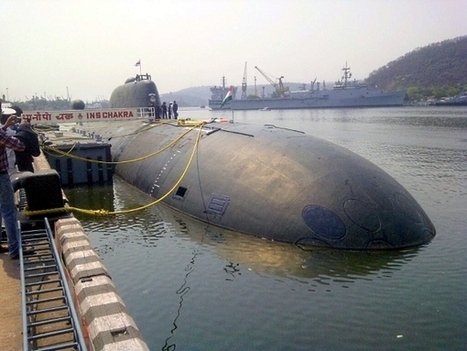



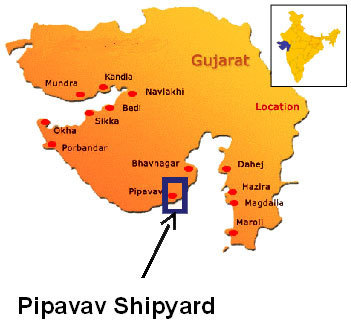
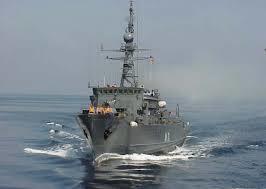
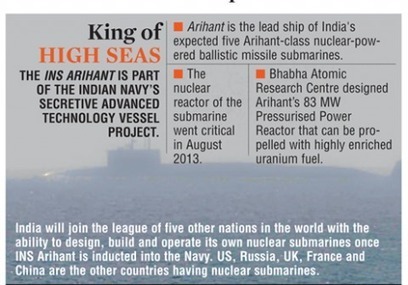
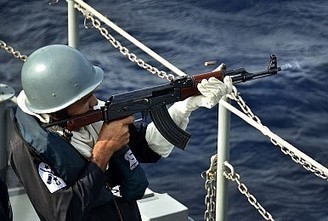
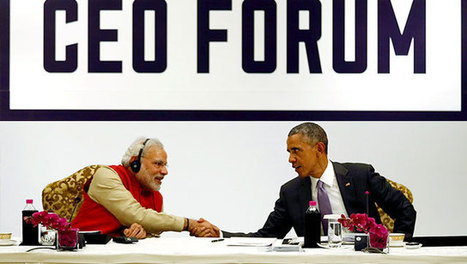

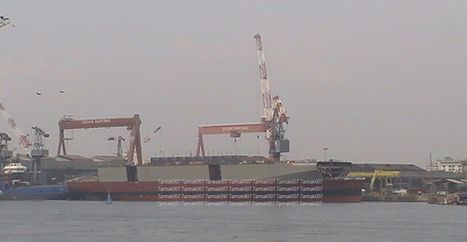
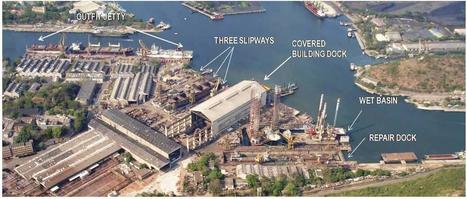
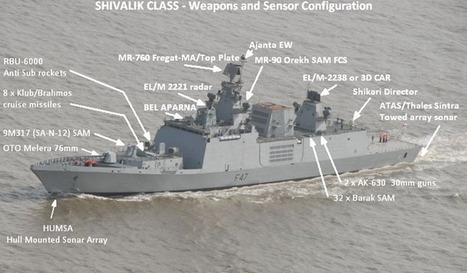

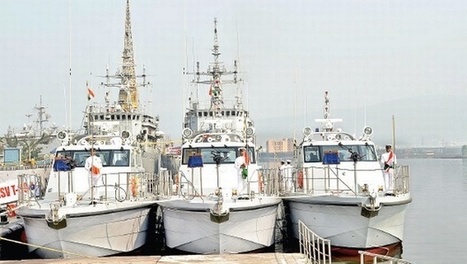
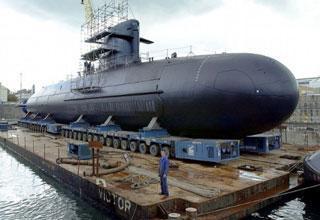
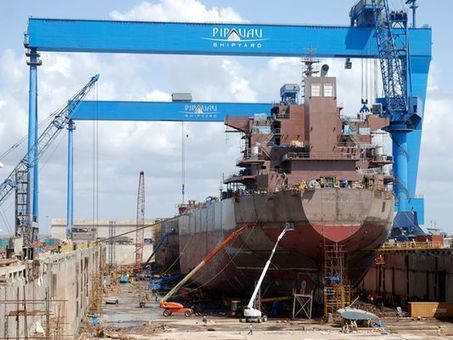
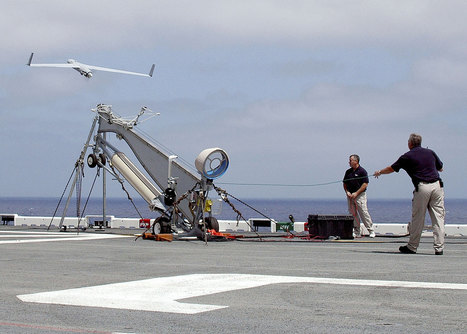
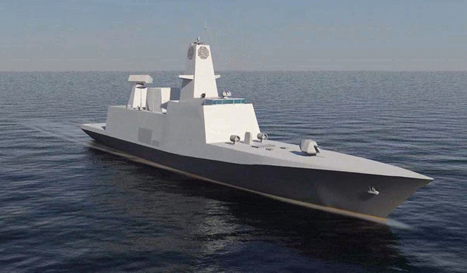

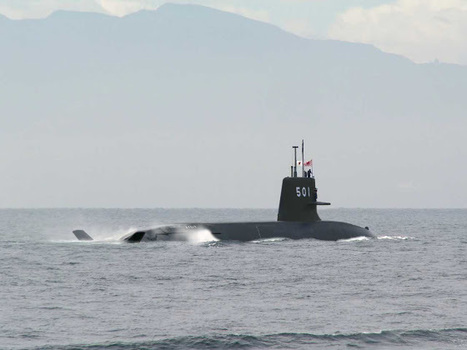
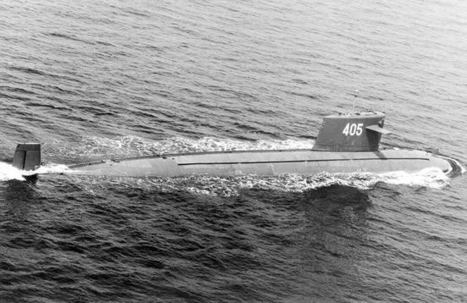
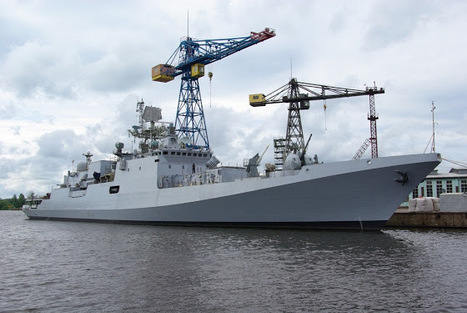
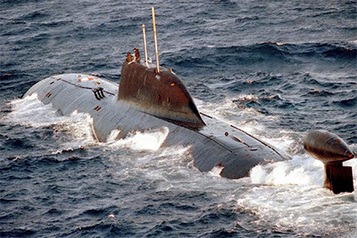







Le nom du SNA concerné par cet accord de leasing, jusqu'ici en cours d'élaboration, avait été dévoilé en janvier dernier :
http://sco.lt/6SG2gD